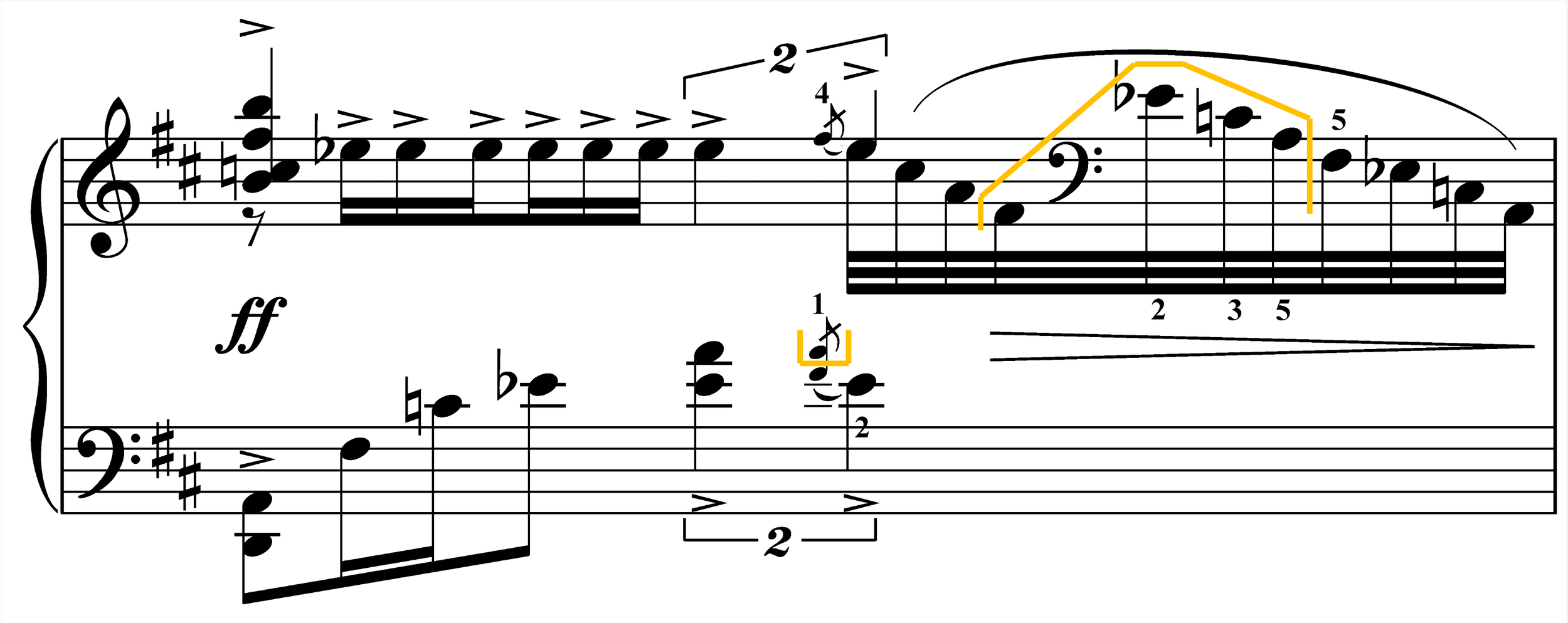SPECIAL COLLECTION | Dorothy Brandwein’s Ravel Fingerings
Published on 4/26/2022 with the author’s permission
First appeared in Dorothy Woster Brandwein, "Divisi Fingering in Selected Passages from Ravel's Solo Piano Works" (DMA diss., University of Missouri–Kansas City, 1981), 45, 87.
45: “The divisi fingering of Example 27 is suggested for the pianist with small hands. The taut, guitar-like chords in the opening measures of ‘Alborada del gracioso’ are a problem technically, since the right-hand fifth finger has difficulty giving adequate brilliance to the top note of each chord. Stronger fingers and a less extended hand position—obtained with divisi fingering—will produce the desired speed and crispness.”
87, fn6: "The notes on the lower staff must be articulated and voiced independently of the divided chords."


















